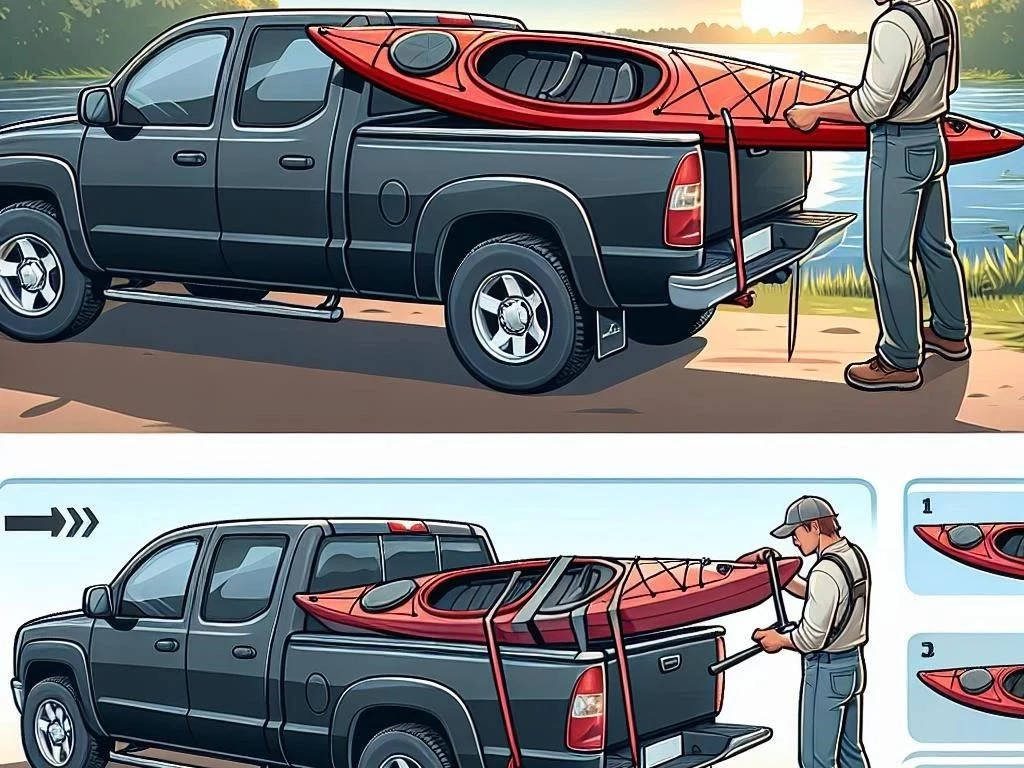
Transporting a kayak in a truck involves careful planning and the right accessories. Ensure your truck is equipped for kayak stability and secure your watercraft effectively for safe travel.
Transporting a kayak in a truck can be an enjoyable experience if done correctly. Understanding the various methods and tools available for kayak transport ensures a safe journey to your destination. Whether you’re heading to a local lake or embarking on a road trip, proper planning is key. Start by assessing your truck’s payload capacity, as this will determine how many kayaks and additional gear you can carry. Consider investing in truck accessories like a kayak rack or roof rack for enhanced stability. Utilize tie down straps to secure your kayak, preventing any movement during transit. Remember, safety is paramount; always double-check your kayak securing methods before hitting the road. With the right preparations, you can focus on the excitement of your outdoor adventure, whether it’s a fishing trip or a weekend camping getaway. Enjoy the journey and embrace the water sports awaiting you!
Importance of Proper Kayak Transport
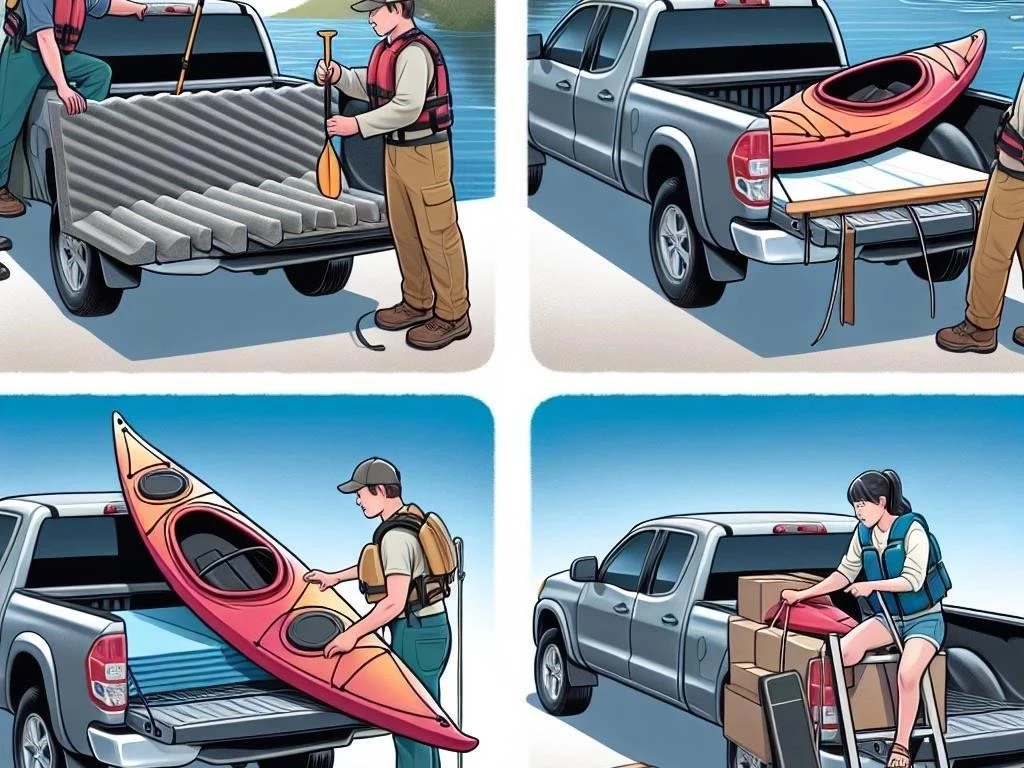
Proper kayak transport is crucial for ensuring the safety of both the kayak and other road users. A securely transported kayak minimizes the risk of damage to your vessel, preventing potential costly repairs. Additionally, an unstable kayak can become a hazard on the road, leading to accidents or injuries. Utilizing appropriate truck accessories like kayak racks and tie down straps ensures that your kayak remains stable during transit. This not only protects your investment but also enhances your driving experience. Moreover, understanding the importance of kayak storage and securing methods can make loading your kayak an efficient process. Proper transport methods also extend the lifespan of your kayak, allowing you to enjoy your water sports for years to come. In summary, taking the time to properly transport your kayak is essential for successful outdoor adventures and a safe journey.

Choosing the Right Truck for Kayak Hauling
Selecting the appropriate truck for kayak hauling involves considering payload capacity, bed size, and compatibility with kayak racks. Ensuring stability and safety is crucial for successful transport.
3.1 Truck Payload Considerations
When transporting a kayak, understanding your truck’s payload capacity is essential for safe and efficient hauling. The payload capacity refers to the maximum weight your truck can safely carry, including the weight of the kayak, any accessories, and additional gear. It’s crucial to check your truck’s specifications, which can usually be found in the owner’s manual or on a sticker located inside the driver’s side door. Exceeding the payload limit can lead to handling issues, increased wear on your vehicle, and potential safety hazards. Additionally, consider the weight distribution; a balanced load enhances stability and prevents swaying during transit. If you’re planning to transport multiple kayaks or additional outdoor gear, factor in their combined weight to ensure compliance with your truck’s capacity. Always prioritize safety and performance by adhering to these payload considerations for your kayaking adventures.
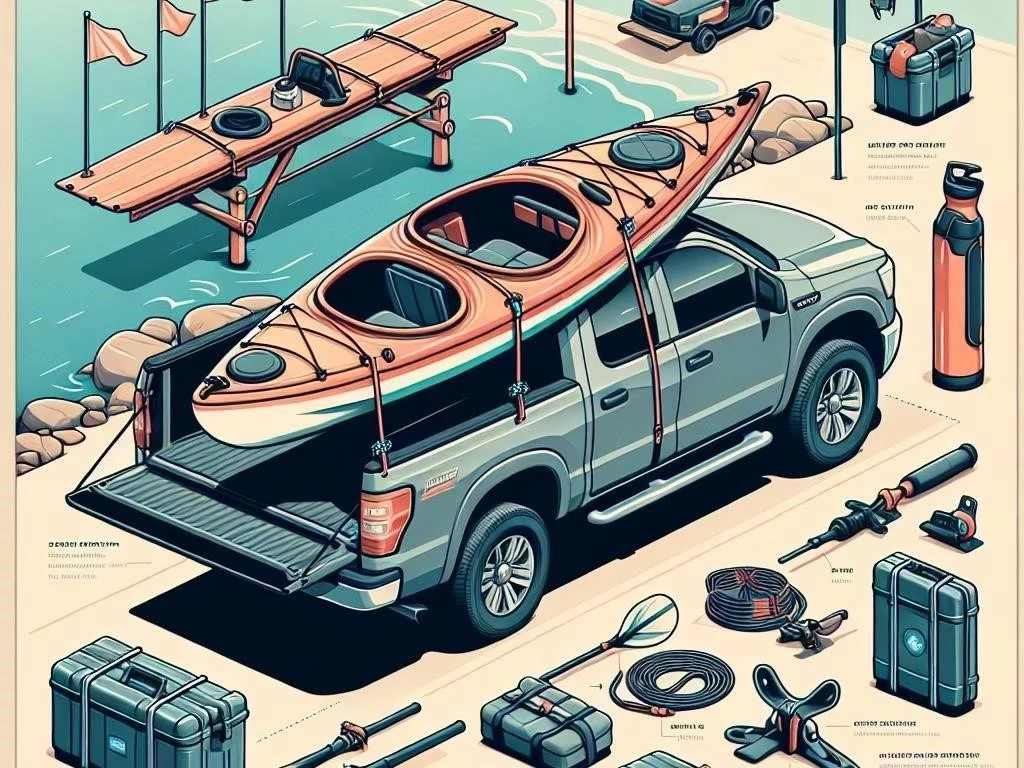
3.2 Truck Modifications for Kayak Transport

To optimize your truck for kayak transport, considering certain modifications can significantly enhance stability and safety. One of the most effective changes is installing a kayak rack, which provides a secure platform for your kayak while distributing weight evenly. This prevents any potential damage to your vehicle during travel. Additionally, adding a bed extender can increase the length of your truck bed, accommodating longer kayaks effectively. Installing a bed liner can also help protect your truck’s interior from scratches and damage caused by loading and unloading. Furthermore, consider reinforcing your suspension system if you frequently carry heavy loads, as this ensures your vehicle maintains stability on the road. Lastly, adding tie down points to your truck bed allows for easier kayak securing, making the loading process efficient and hassle-free. These modifications not only improve functionality but also enhance the overall kayaking experience;
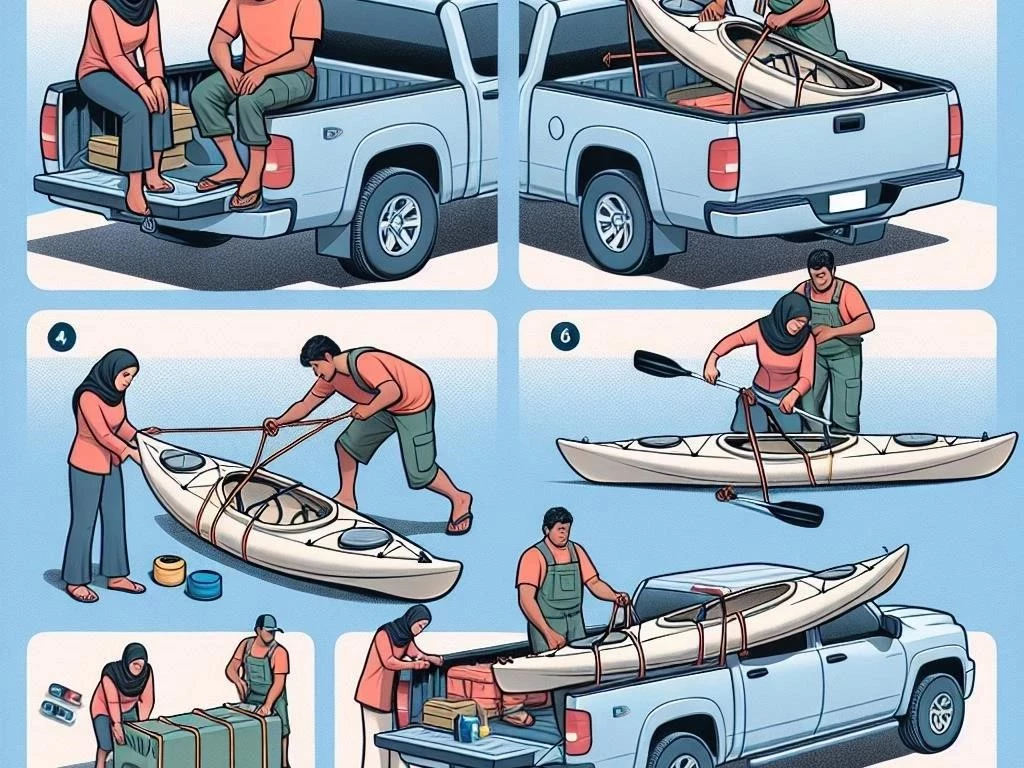
Essential Truck Accessories for Kayak Transport
Equipping your truck with the right accessories is vital for effective kayak transport. Consider kayak racks, tie down straps, and bed extenders for enhanced stability and secure hauling.
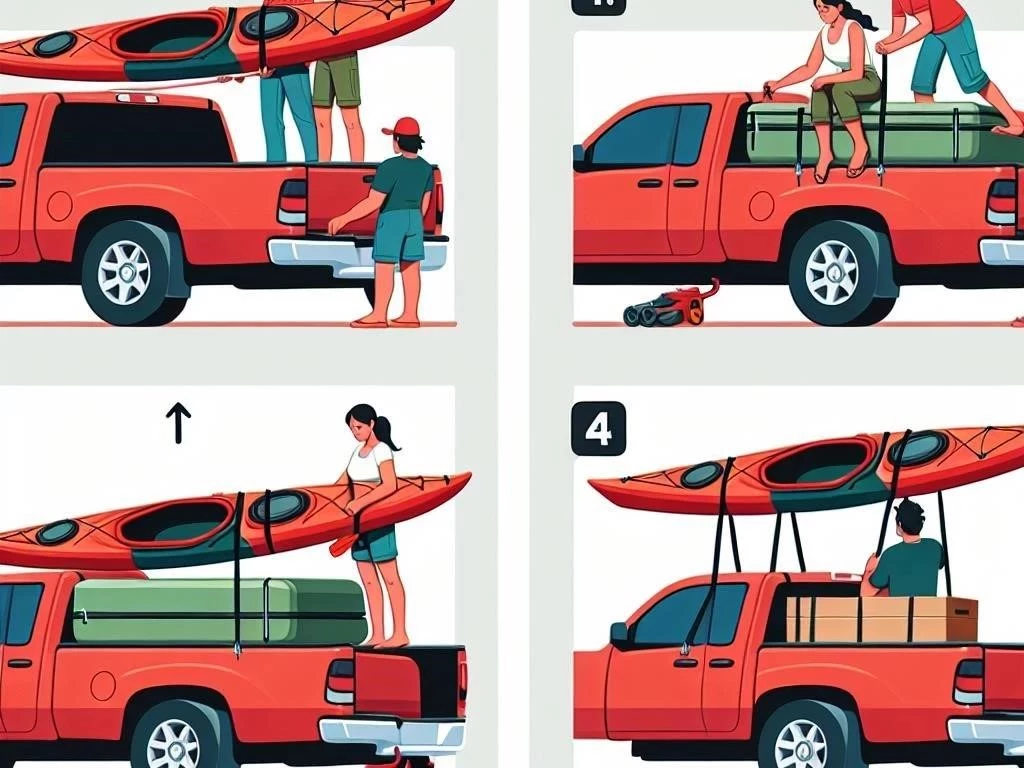
4.1 Kayak Rack Options
Choosing the right kayak rack is essential for safe and efficient transport. There are several options available, each designed for specific needs. First, consider a truck bed kayak rack, which is ideal for securing kayaks directly in your truck bed, providing stability and easy access. These racks often feature adjustable arms to accommodate various kayak sizes. Alternatively, a rooftop kayak rack can be mounted on the truck’s roof, allowing for more space in the bed for additional gear. This option is great for larger trucks or when hauling multiple kayaks. Some racks come with integrated tie down systems, enhancing security during transport. Additionally, consider folding kayak racks, which can be easily stored when not in use. When selecting a kayak rack, ensure compatibility with your truck model and prioritize materials that offer durability and weather resistance for long-lasting use.
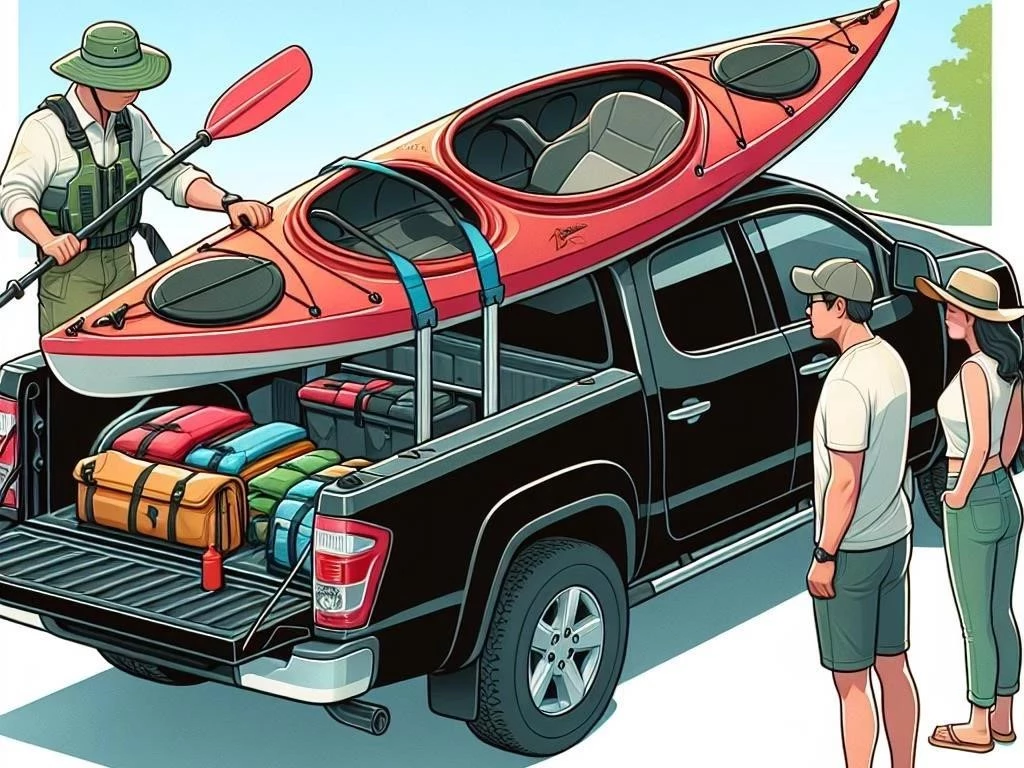
4.2 Roof Rack Benefits
Utilizing a roof rack for kayak transport offers numerous advantages that enhance both convenience and safety. One significant benefit is the increased cargo space in your truck bed, allowing you to carry additional gear or supplies for your outdoor adventures. Roof racks also provide a secure and stable platform for your kayak, minimizing the risk of damage during transit. By elevating the kayak, these racks improve aerodynamics, potentially enhancing fuel efficiency on long trips. Furthermore, roof racks often include integrated tie down points, making it easier to secure your kayak properly. This ensures that your kayak remains stable and prevents shifting while driving. Additionally, a roof rack can be versatile, accommodating other outdoor equipment like canoes or paddleboards. Overall, using a roof rack is an efficient way to maximize your truck’s transport capabilities, allowing for a more enjoyable kayaking experience.
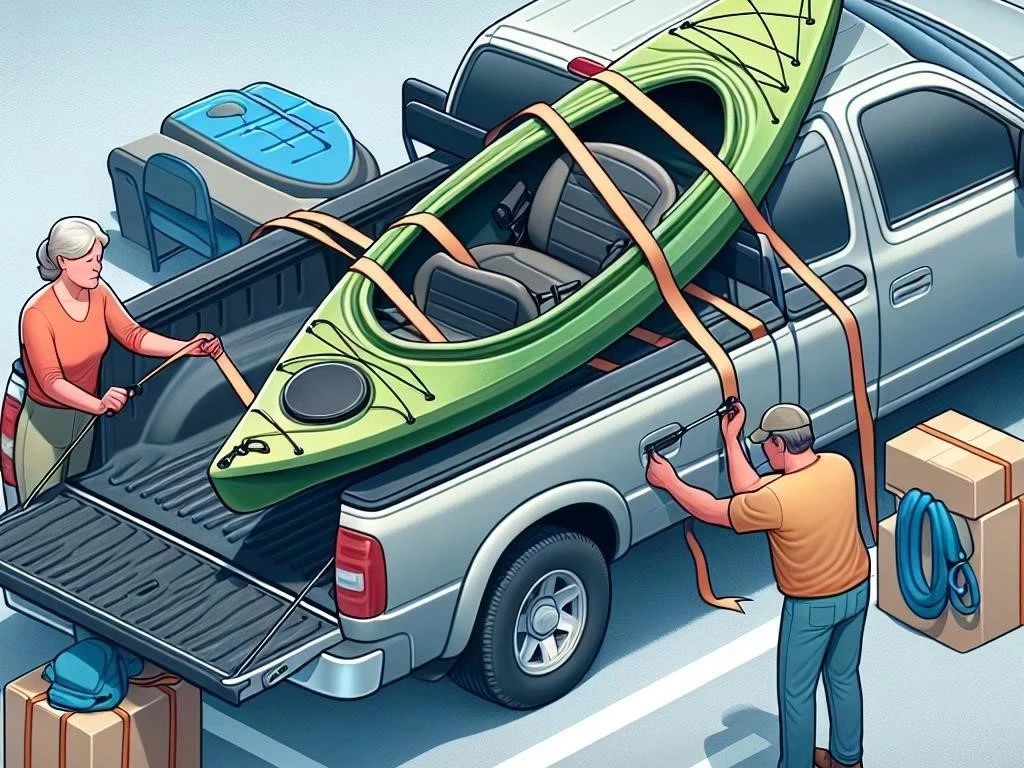
4.3 Kayak Carrier Types
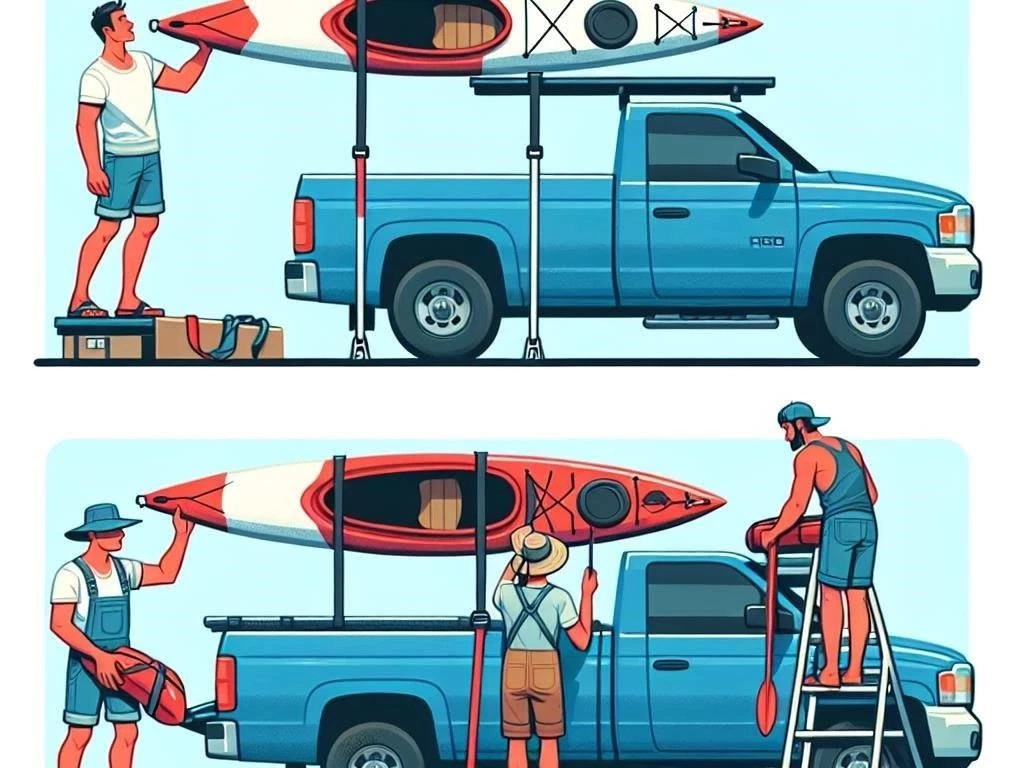
When transporting a kayak, understanding the different types of kayak carriers is essential for selecting the right option for your needs. There are primarily three main types of carriers: J-style, vertical, and saddle carriers. J-style carriers are popular for their ability to hold kayaks at an angle, maximizing roof space and improving aerodynamics. They are particularly advantageous when transporting multiple kayaks. Vertical carriers, on the other hand, allow kayaks to be stored upright, which can save more space on your truck. Saddle carriers offer a flat platform, providing the best support and stability for your kayak, which is crucial for long-distance travel. Additionally, some carriers come with adjustable features to accommodate various kayak sizes, ensuring a secure fit. When choosing a kayak carrier, consider your truck’s design, the number of kayaks you plan to transport, and your specific transportation needs for the best results.

Preparing Your Kayak for Transport
Preparing your kayak for transport is crucial to ensure safety and prevent damage. Proper cleaning, securing, and checking accessories will enhance your overall kayaking experience during travels.
5.1 Loading Kayak Techniques
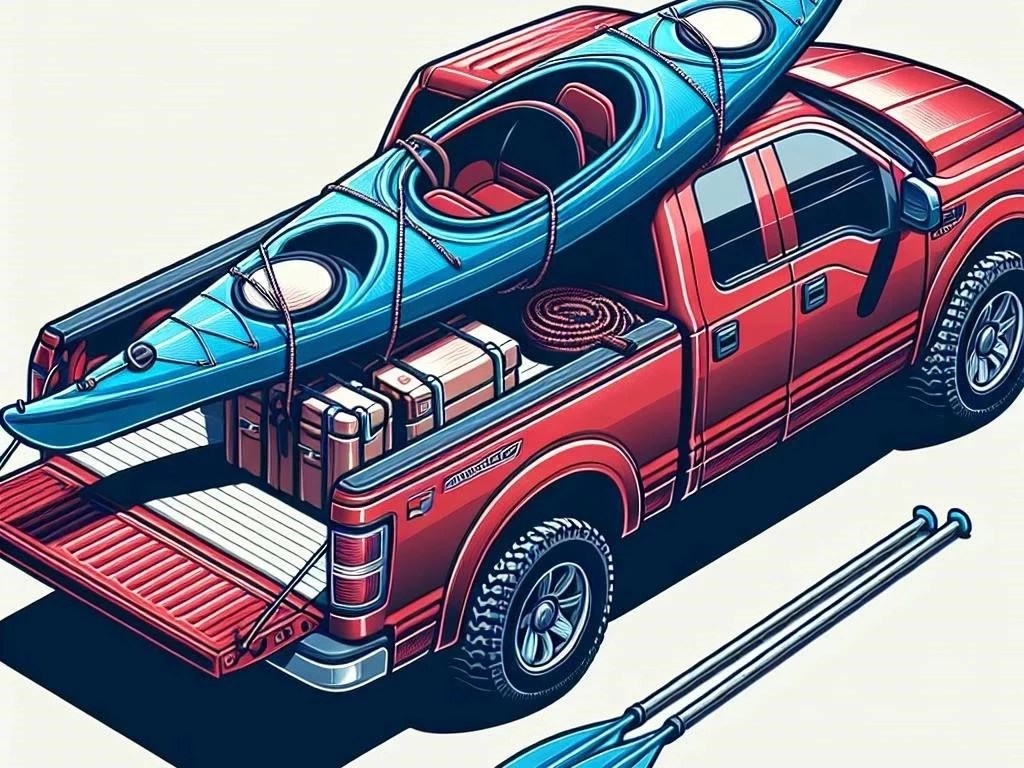
Loading your kayak correctly into the truck is vital for ensuring safety and preventing damage during transportation. Begin by positioning your truck close to a flat surface to facilitate easy loading. If possible, enlist the help of a friend to assist in lifting the kayak. To load, lift the kayak from the center, ensuring that you maintain balance. Place the kayak on the truck bed or rack at an angle, providing enough clearance for the tailgate and ensuring it doesn’t extend beyond the vehicle’s length. Use a kayak dolly if available, as it makes the process easier and reduces strain. Once the kayak is in place, check that it sits securely and is centered to maintain stability. Finally, prepare to secure the kayak using tie down straps or safety straps, ensuring it remains stable during transit to avoid any movement or damage.
5.2 Kayak Stability Considerations
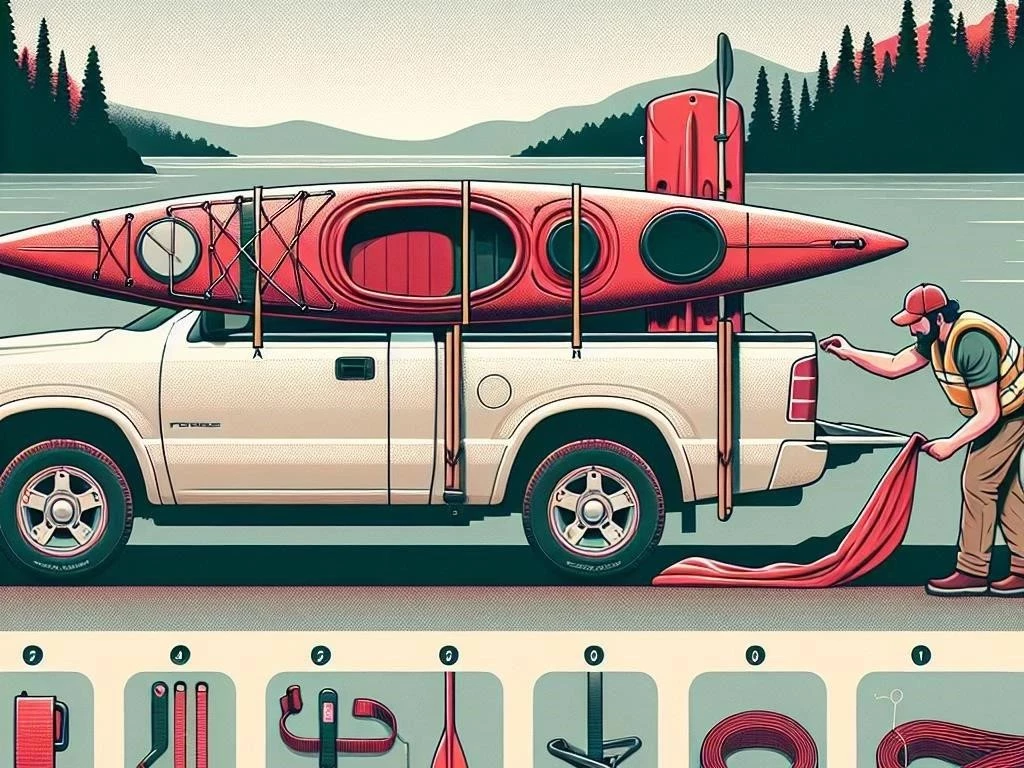
Ensuring kayak stability during transport is crucial for both safety and the integrity of your kayak. Start by placing the kayak in the truck bed or on the roof rack at its center of gravity, which is typically around the cockpit area. This positioning helps distribute weight evenly and prevents swaying while driving. Utilize foam pads or pool noodles under the kayak to provide cushioning and prevent slipping. Properly securing the kayak with tie down straps is essential; make sure they are tight enough to hold the kayak in place without causing damage. Additionally, consider using cam buckle straps, which offer adjustable tension and ease of use. Regularly check the stability during breaks on longer trips to ensure everything remains secure. Lastly, avoid overloading your truck, as excessive weight can affect handling and stability, making your journey less safe.
Securing Your Kayak in the Truck
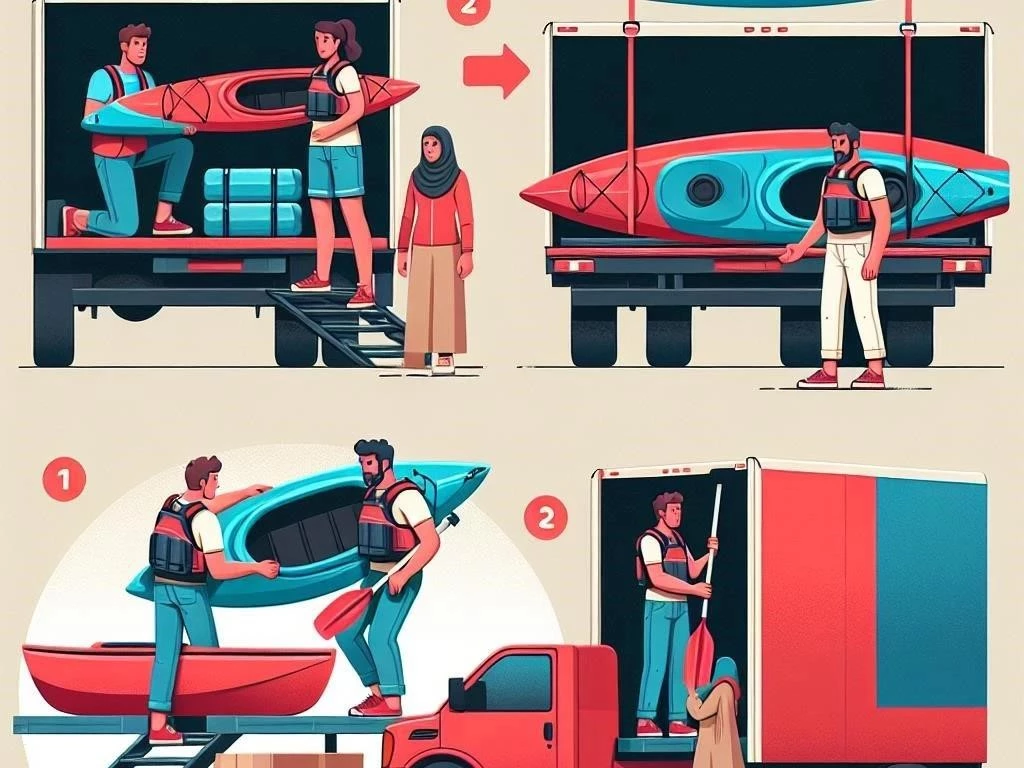
Securing your kayak in the truck is essential to prevent movement during transit. Proper methods, including using tie down straps and safety straps, ensure stability and safety while driving.
6.1 Using Tie Down Straps

Using tie down straps is a critical step in securing your kayak for transport in a truck. Begin by selecting high-quality, durable straps that can withstand the weight of your kayak and retain tension during travel. Start by positioning the kayak correctly in the truck bed or on the roof rack. Then, loop the tie down straps over the kayak, ensuring they connect to the truck’s tie down points or other secure anchor locations. When tightening the straps, ensure they are snug but not overly tight, as excessive pressure can damage the kayak. It’s important to check the straps for any slack or movement before starting your journey. During longer trips, make periodic stops to inspect the stability of the kayak and the tightness of the straps. Properly using tie down straps not only protects your kayak but also enhances safety for you and other road users.

6.2 Importance of Safety Straps
Safety straps play a vital role in ensuring the secure transport of your kayak in a truck. While tie down straps primarily serve to hold the kayak in place, safety straps provide an additional layer of security, preventing any accidental movement during transit. By using safety straps, you significantly reduce the risk of the kayak shifting, which can lead to potential damage to both the kayak and your vehicle. These straps are especially crucial for longer trips or on rough terrain, where unexpected bumps and jolts can occur. It is essential to attach safety straps to both the front and rear of the kayak, anchoring them to reliable tie down points in the truck. Regularly inspecting these straps throughout your journey ensures that your kayak remains stable and secure. Overall, incorporating safety straps into your transport routine enhances both safety and peace of mind while on the road.

6.3 Tips for Kayak Securing
Securing your kayak properly is essential for a safe journey. Start by choosing the right location for loading, ensuring the truck bed is clean and free of debris. Use a kayak dolly to assist in loading, making the process easier and reducing strain. Once positioned, use foam pads or pool noodles to provide extra cushioning and prevent slipping. When applying tie down straps, position them over the widest points of the kayak to maximize stability. Ensure the straps are tight enough to prevent movement but not so tight that they risk damaging the kayak. Always double-check that the kayak is centered in the truck bed or on the roof rack. During longer trips, take breaks to inspect the kayak and straps for any slack. Lastly, consider using additional safety straps for added security, ensuring your kayak remains stable and secure throughout your travels.
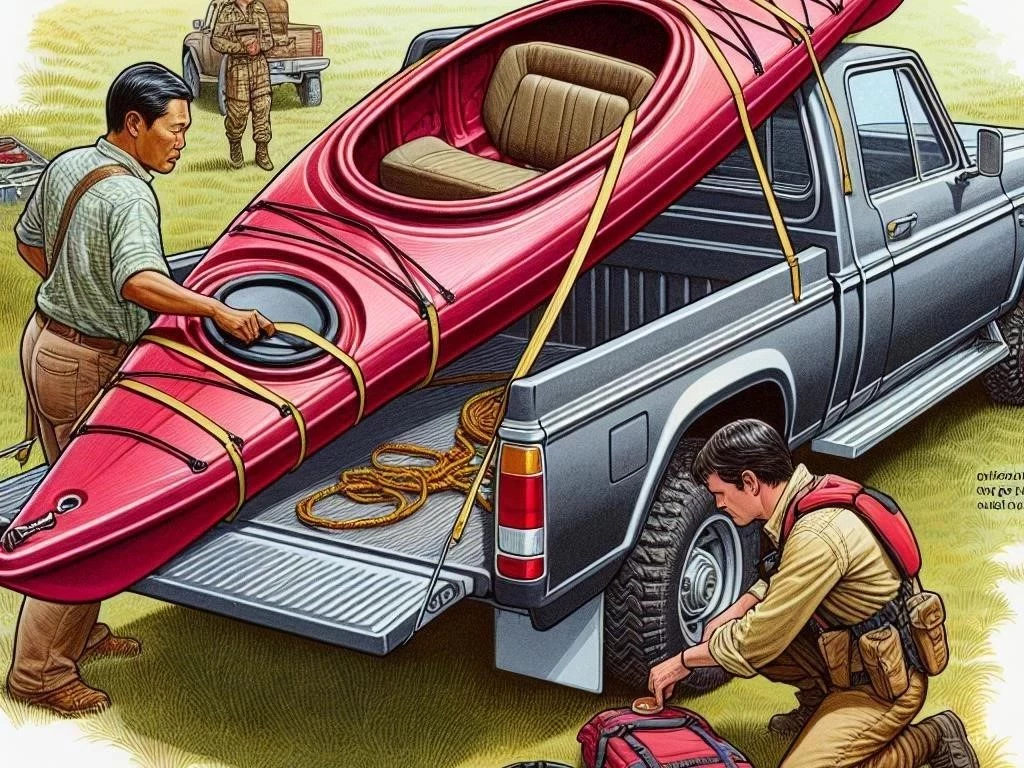
Utilizing a Kayak Dolly for Transport
A kayak dolly simplifies the transport process, allowing for easy movement of your kayak to and from the truck. This tool enhances convenience and reduces physical strain during loading.

7.1 Advantages of Using a Kayak Dolly
Utilizing a kayak dolly for transport offers several significant advantages that enhance your overall kayaking experience. First and foremost, a kayak dolly makes it easier to move your kayak from storage to your truck, especially if the kayak is heavy or cumbersome. This reduces physical strain and minimizes the risk of injury caused by lifting and carrying. Additionally, many kayaks are designed with specific dolly attachments, ensuring a secure fit while transporting. A dolly also allows for smoother navigation over various terrains, whether on pavement, grass, or sand, making the journey to the water much more manageable. Furthermore, using a dolly can help protect your kayak from potential damage during transport, as it prevents dragging or scraping against rough surfaces. Overall, a kayak dolly combines convenience and efficiency, making it an excellent investment for any avid kayaker looking to streamline their transport process.

7.2 How to Load Kayak onto a Dolly
Loading your kayak onto a dolly is a straightforward process that can significantly reduce effort and strain. Begin by positioning the dolly close to the kayak, ensuring it’s stable and secure; If your dolly has adjustable arms, set them to fit your kayak’s width. Next, carefully lift the kayak from its center, maintaining balance to avoid tipping. Place the kayak on the dolly, aligning it so that the weight is evenly distributed. If your dolly has straps or a securing mechanism, fasten them to hold the kayak in place securely. Ensure the kayak is stable before attempting to move it; Once secured, you can easily roll the dolly to your truck or launch site. When navigating over uneven surfaces, keep an eye on your kayak’s position and adjust as necessary. Following these steps ensures a smooth loading experience while protecting your kayak during transport.
Transportation Tips for Kayak Travel
When transporting your kayak, consider planning your route carefully, checking weather conditions, and ensuring all gear is secured. These tips enhance safety and contribute to a successful outdoor adventure.

8.1 Planning Your Route for Outdoor Adventure
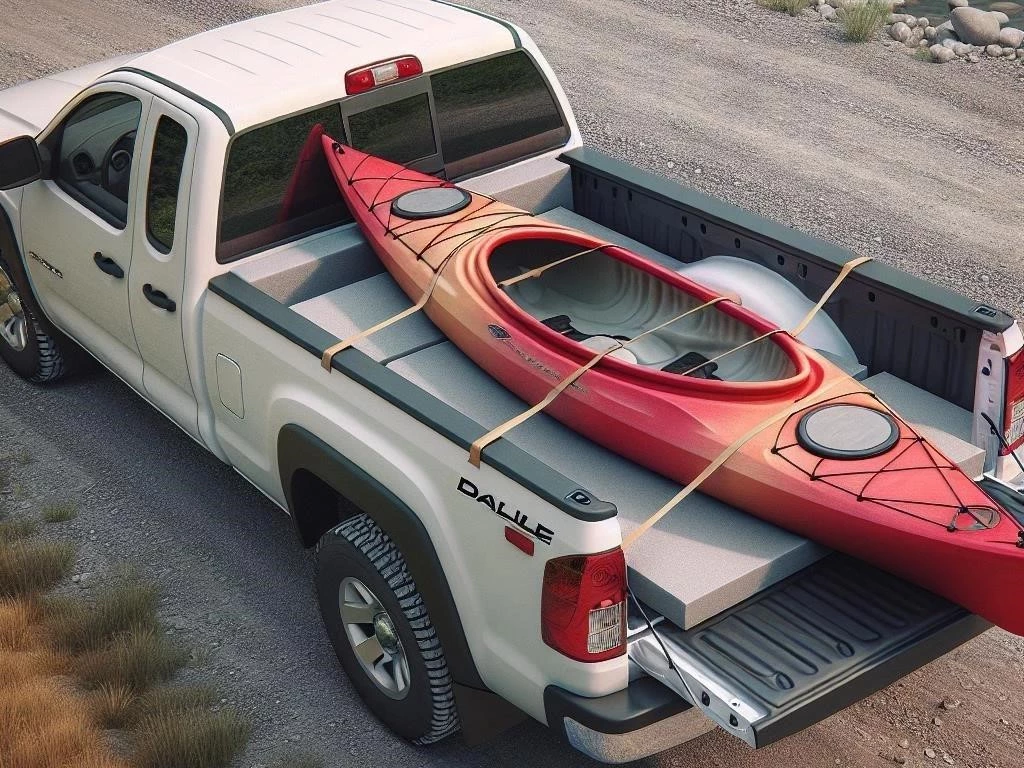
Planning your route for kayak transport is essential to ensure a smooth and efficient journey. Start by selecting the most direct path to your destination, taking into consideration road conditions and traffic patterns. Utilize maps or navigation apps to identify potential obstacles such as low bridges or narrow roads that may not accommodate your truck with a kayak. Consider alternative routes that might offer smoother driving conditions or scenic views, enhancing your outdoor adventure. Check weather forecasts to avoid traveling during inclement weather, which can impact both road safety and your kayaking experience. Additionally, identify rest stops along the way to check on your kayak’s stability and security periodically. Inform someone about your travel plans, so they know your expected arrival time. By meticulously planning your route, you minimize stress and increase the likelihood of an enjoyable and successful kayaking outing.
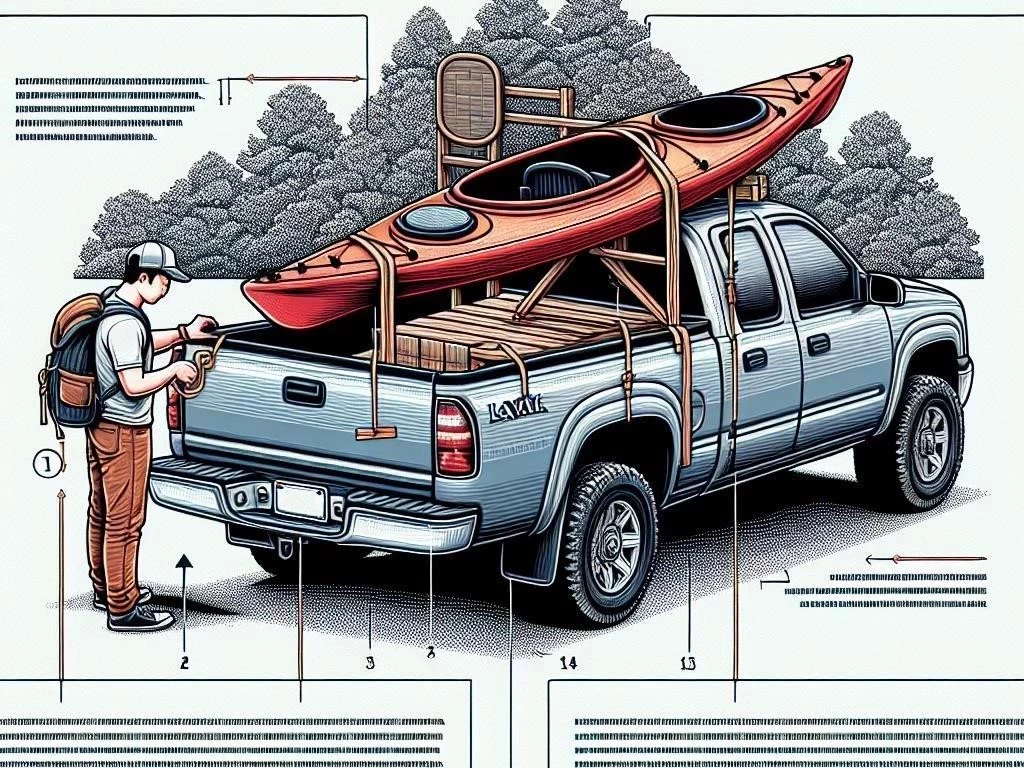
8.2 Packing Fishing Gear and Camping Gear
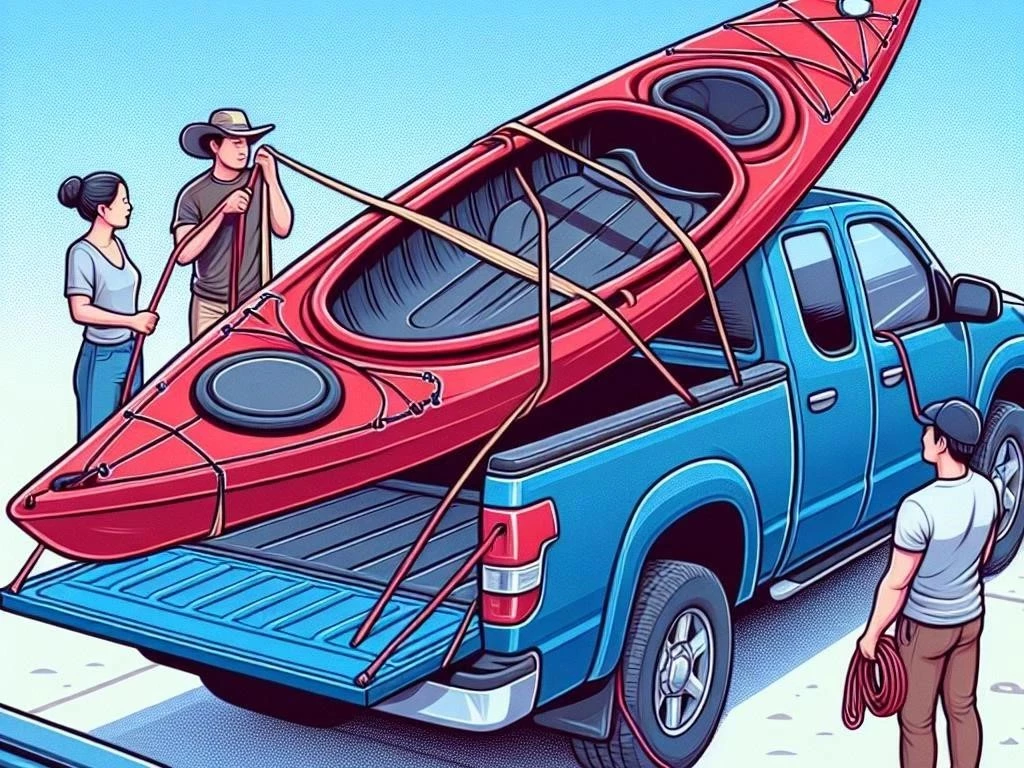
When preparing for an outdoor adventure involving kayaking, proper packing of fishing gear and camping gear is essential for a successful trip. Start by selecting storage containers or bags that are waterproof to protect your equipment from moisture. Organize your fishing gear, such as rods, reels, tackle boxes, and bait, ensuring everything is easily accessible. Place heavier items in the truck bed first, balancing weight distribution for safer transport. For camping gear, include a tent, sleeping bags, cooking supplies, and other essentials, neatly packing them to maximize space. Use tie down straps to secure all gear, preventing shifting during transit. Consider utilizing a rooftop cargo box if additional space is needed, which can keep your gear organized and safe. Lastly, create a checklist to verify that all necessary equipment is packed, ensuring nothing is forgotten and enhancing your overall outdoor experience.
Transporting your kayak effectively in a truck requires careful planning and proper techniques. Following these guidelines enhances safety, ensuring an enjoyable adventure while protecting your kayak and equipment.
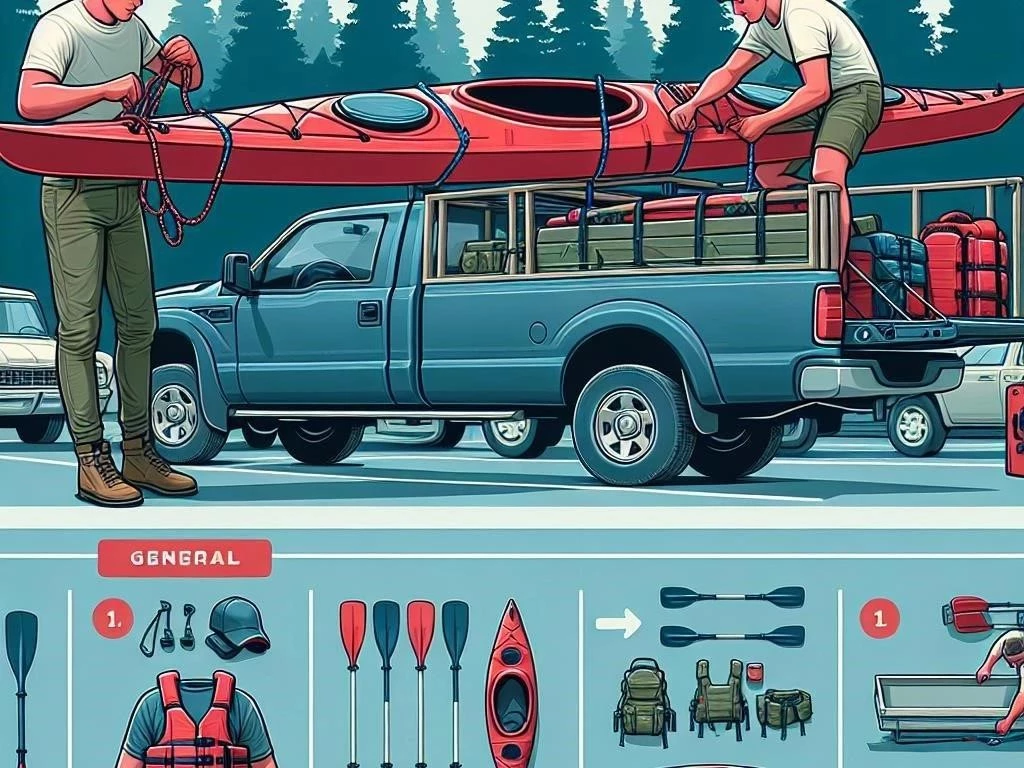
9.1 Recap of Key Points
9.2 Encouragement for Future Kayaking and Water Sports

As you embark on your kayaking journey, remember that preparation and knowledge are key to enhancing your experience. Embrace the adventure and memories that come with exploring waterways, whether you’re fishing, paddling, or simply enjoying nature. Each trip offers an opportunity to connect with the outdoors, improve your skills, and create lasting memories with friends and family. Don’t hesitate to try new locations or water sports, as they can broaden your horizons and deepen your appreciation for water activities. Invest time in learning about safety measures and best practices, ensuring a rewarding experience every time you venture out. Whether you’re a seasoned kayaker or a beginner, the thrill of outdoor adventure awaits. So gear up, secure your kayak properly, and hit the road with excitement. Your next great kayaking adventure is just around the corner, ready to inspire and invigorate your passion for water sports.